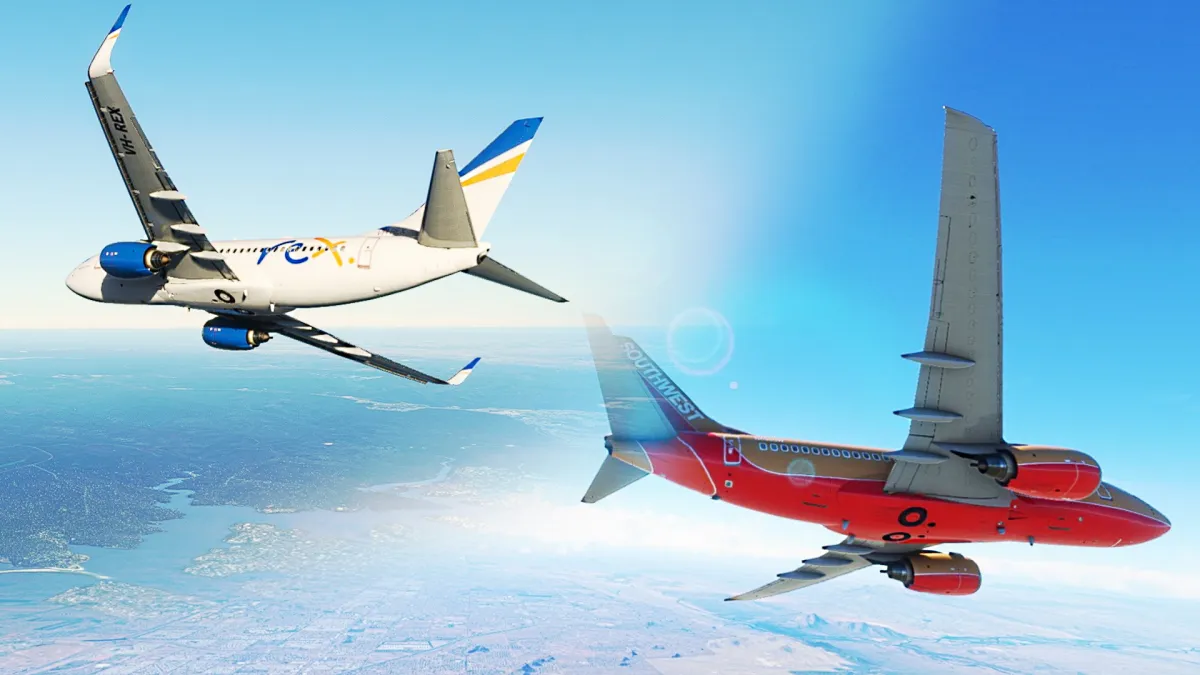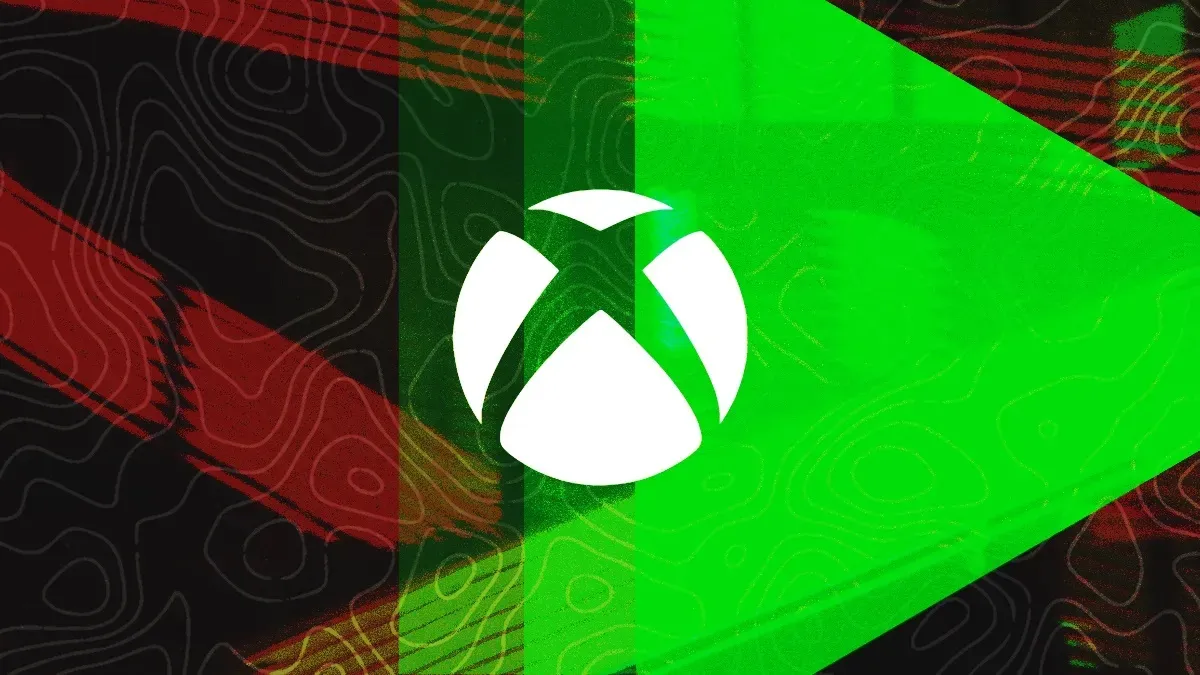PMDG has been crafting add-ons for the world of flight simulators for decades. In that time, the company has built up quite the reputation for producing high-quality, “complex” products. The same remains true for its latest outings with the new Microsoft Flight Simulator. Unsurprisingly, it’s started with one if its most popular products, which just so happen to be some of the most popular aircraft in the real-world—the Boeing 737 family. With the 737-600 and 737-700 now both available for Microsoft Flight Simulator, one has to ask: “What’s the best?”
Having now purchased and flown both variations of the jetliner, the short answer is: it’s up to you.
The big questions
Before we get too deep in the trenches, I’ll knock out the simplest, most common questions first.
Do I need to purchase the Boeing 737-700 first in order to use the -600?
- No, these are actually separate, standalone add-ons. This is different than how PMDG has handled variations of the same jetliner in the past.
What’s the price difference between the two?
- The -600 costs mere $34.99 USD, but the -700 is practically double at $69.99 USD.
Do I get a discount for the -600 if I’ve already purchased the -700?
- Unfortunately, no. Even if you bought the -700 on PMDG’s own storefront, you’ll still need to pay the full amount to access the -600. Discounts only apply to customers who pre-ordered the -700 well in advance, when PMDG thought it was going to deliver it shortly after the release of Microsoft Flight Simulator. And, even then, the discounts only applied to the -700.
Now, let’s get to the fun part. What’s the real difference between these two jets?
Consistency is key
In short, the Boeing 737-600 and -700 all belong to the same family: the Boeing 737 Next Generation (or 737NG) lineage. This line of the 737 dates back to 1993 as the third generation in the airframe’s entire history.
The -600 is the smallest and earliest of the bunch, with the the -900ER standing as the largest and final iteration of the 737NG line. Despite being the “runt,” so to speak, the 737-600 is actually still quite a capable member of the family. This is due to a procedure that Boeing long put in place for the entire 737 lineage: continuity.
With each new variant of the airframe, much about its design is left mostly unchanged. Really, the entire 737 range from its inception until the latest 737 MAX has basically taken the same core concept of the original 737-100 from the 1960s and stretched it out over time.
The engines have gotten bigger and more efficient, and the avionics and materials have all been modernized. But a 737 of today shares a lot of commonality with its predecessors. With the 737NG line, Boeing ensured that consistency is key. Aside from some interesting quirks with flight dynamics, a short and stubby 737-600 is not too far off from its “long-boy” brethren.
Tech talk
With all these factors considered, I’m happy to report that PMDG has done a good job at making sure this commonality translates to the 737-600’s and 737-700’s virtual counterparts. The cockpits of each aircraft are the same, meaning that once you’ve learned one, you’ve learned the other. So, the real difference comes down to size and, therefore, flight performance.
At 102 feet, the 737-600 is notably more condensed than the longer 737-700 at 110 feet. Looking at them from the side is kind of a trip, since the -600 looks almost oddly stubby, especially considering that one of the iconic design quirks about all 737s is how low they are to the ground compared to most other aircraft. Naturally, then, the size difference between these two variants translates to a smaller carrying capacity. In terms of passenger capacity, the 737-600 can only handle up to 123 passengers, whereas the -700 can carry up to 140. But the -600’s smaller size has some key advantages.
Seeing that it shares the same kind of engine with its bigger sisters, the 737-600 produces a comparable level of thrust. It can get up to speed a lot more quickly, leading to shorter take-offs. The inverse is true as well, as it can easily land on shorter runways. During a flight, the 737-600 can ink out up to 3,235 nautical miles of range — roughly 200 nautical miles more than the 737-700. In fact, it has the longest range of the entire 737NG line.
A day in the life
With all of this power crammed into a smaller body, flying 737-600 in Microsoft Flight Simulator feels a tad more zippy compared to the 737-700. She’s very maneuverable, climbs well, and lands slow. The more “hands-on” feeling of the 737 compared to the sim’s included Airbus offering, the Airbus A320neo, remains present here.
Now, truth be told, despite all my years of experience in the world of flight sims, I’m still relatively new to the market of complex airliner add-ons. I never purchased them in past sims, but Microsoft Flight Simulator itself has turned me into a believer. That said, even in my more humble opinion compared to that of a true hardcore simmer, I can still say that both of these jets are largely the same. That can arguably be an annoyance for anyone who’s already bought the -700. But it’s a home run for someone who’s looking into this product line for the first time.
Fly your way
At just $34.99 USD, the PMDG 737-600 for Microsoft Flight Simulator is currently the most affordable high-quality airliner in the entire simulator. While there are even cheaper planes, such as the Embraer E-Jets from Virtualcol, the gulf in quality is simply massive. PMDG is offering an airliner with a fully functioning avionics suite, dedicated ground equipment services, full FMS, very accurate flight dynamics, and incredibly crisp textures for what amounts to being almost a steal. Not to mention there has already been and will continue to be a support line of updates to make improvements and additions over time.
True, $34.99 USD is nearly the price of the actual simulator itself, and well past it if you’re playing via Game Pass, but the 737-600 is worth this price simply due to it being so low in the first place.
As alluded to earlier, the way that PMDG is selling its different 737 variants is poles apart from its past business approaches. For instance, over on PMDG’s site, it continues to carry products for Prepar3D — the spiritual predecessor to Microsoft Flight Simulator.
With Prepar3D, the Boeing 737 is first sold as a base package (including the -800, -900, & -900ER) for $99.99 USD. There’s also the -600 and -700, but they can only be obtained via an expansion package for an additional $24.99 USD. So, to access the whole 737NG family for Prepar3D, it costs $125 USD. Considering that the average simmer may not even use each model (if so, perhaps only occasionally switching between them), that means they’ll be paying at least $100 USD for more than what they likely even want.
On the other hand, with Microsoft Flight Simulator, PMDG has switched to giving consumers a lot more flexibility. The -800 is launching in a few more weeks as another standalone purchase. It’s currently unclear how much it will cost, but it more than likely won’t be that much more than the -700’s price — if there’s any increase at all. All things considered then, the -600 truly is a steal if you’re considering buying premium add-on planes.
Pitching additional planes like the 737-600 at such a low price only serves to attract more customers, including those who may not have looked twice should the price have been significantly higher. Hardcore simmers would likely have paid any price, as they always have in decades prior; this is why complex add-ons have costed as much, if not more, than the sims they’re supporting. But, such customers make up a very small chunk of what is already a niche market.
Who’s the PMDG 737-600 really for?
So, when looking at the wider scope things, who is the PMDG 737-600 for? It still fits the bill for being able to scratch the itch for hardcore simmers who want another complex airliner in their collection, but it’s arguably an even better fit for those who are just getting into complex airliners for the first time.
It’s a relatively easy bird to fly, and there’s a lot of assists that help it to adapt to the needs of each player. After taking in a few quick YouTube tutorials, for example, you’ll be ready to kiss the sun and skim the skies.
The chances of another add-on airliner of this caliber releasing for Microsoft Flight Simulator is most likely rather low; these companies need to turn a profit. So, much like its real-world counterpart, the PMDG 737-600 may very well remain as quite the rarity. Yet, while the real jet didn’t sell all that well, this may just end up being the opposite case in the virtual realm.















Published: Aug 2, 2022 10:45 am